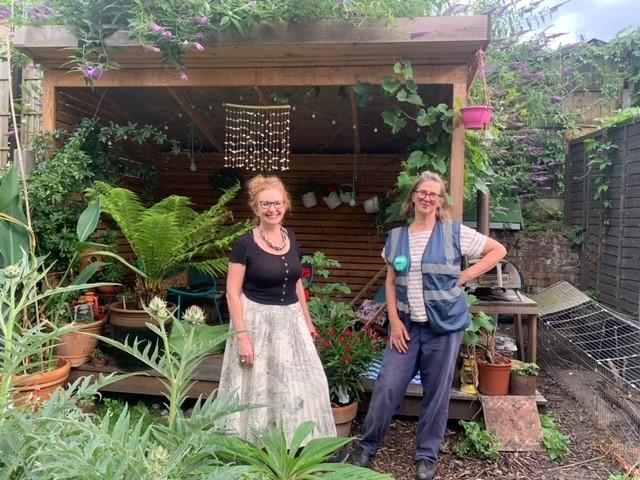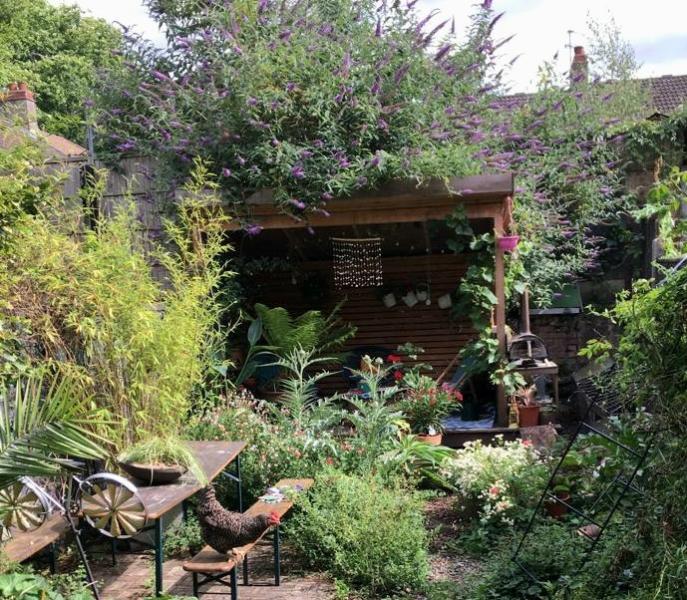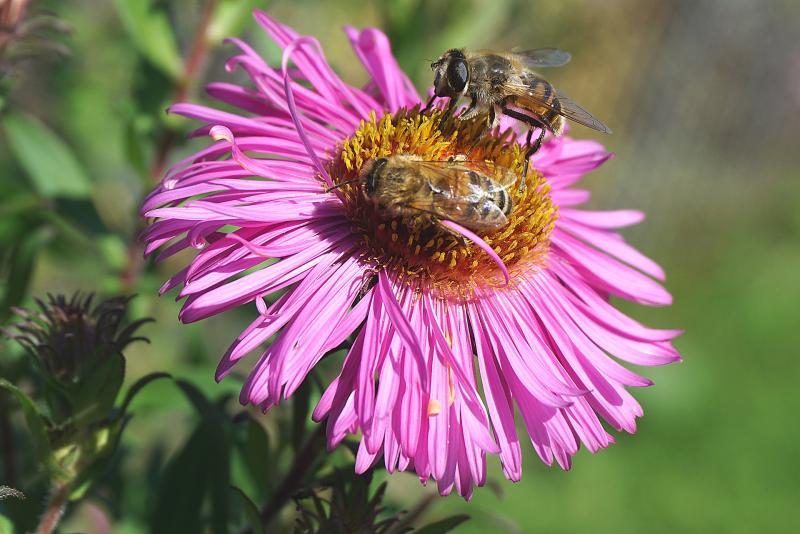Ciaran Biggins27 Sep 2022
Three 10xGreener projects in Hackney, East London, Bideford in Devon and Chester in Cheshire have now been running for 3+ years with a postcode gardener paid for by a mix of crowd funding, subscription and grants. While the financial and delivery models look different, all three report concerns that funding is not yet sustainable and we need to look beyond grants and philanthropy to make the postcode gardener roles less precarious.
I have been exploring a new business model that could provide a sustainable income stream for the postcode gardener projects.
A fee paying service for nature friendly gardening
We wondered whether there would be sufficient interest for the postcode gardeners to offer a paid-for nature friendly gardening service that could improve the ecological value of nearby private gardens while also funding the free community greening work. So first we carried out a survey in Hackney, E5.
What we learned
We developed a survey with our partners in E5 that was shared through their social media channels, local forums and the Nextdoor app. To help entice people to complete the survey we offered a competition for one entrant to win a free gardening session with a postcode gardener. We wanted to learn if there was an appetite for a premium gardening service whose profits would support the free community urban greening of their area. 48 people completed the survey; 80% of the respondents were female and 35-64 was the main age bracket. We gained some interesting insights along the way.
Framing
100% of people responding to the survey agreed that it was important for a gardener to work in an environmentally friendly way and people are attracted by the terms ‘wildlife friendly’ and ‘nature friendly’ when looking for a gardener. Terms such as organic gardener and permaculture gardener scored much lower than expected.
What’s important in a garden?
So it’s not so surprising that when asked what elements of the garden are most important, the highest scoring answer was attracting wildlife, followed by connecting with nature and relaxing and unwinding. Conversely having a neat and tidy space scored lowest.
I was particularly struck by the fact that people were keen to work alongside the gardener to learn rather than just commission their services and were interested in how they might link gardens and create wildlife corridors. Overall, it was heartening that people wanted to know how their garden could play a role in supporting biodiversity and make their spaces wildlife-friendly.
What gardening services are you interested in?
The highest scoring answers were a garden assessment and recommendation service and planting flowers to attract wildlife and pollinators. I was both surprised and encouraged that creating a rich diversity of habitats and building soil health scored highly too - which isn’t often on the radar of my gardening clients.
But how much would you pay?
Down to brass tacks - what price would people be prepared to pay for a postcode gardener to do work in their garden, knowing that a proportion would pay for community greening? The most popular price was £25 per hour which is about average for a gardener in London but 15% would pay £40, 26% would pay £30 and 5% £35. This gave us confidence that there would be a market for a more premium offer.
How we developed the offer before trialling
Armed with our survey results, we decided that we should base our service on wildlife-friendly gardening with a view to attracting different kinds of wildlife. Gerry, who is building on 10xGreener with a Masters degree in wildlife conservation at the University of the West of England and I met with Kate the postcode gardener. We pooled our knowledge and developed a framework and scoring process that we could use in gardens to assess whether a garden is in a favourable condition for wildlife.
Our approach: More plants. More habitats. More connectivity
Based on Gerry’s expertise, we proposed that the key elements we assess for overall garden biodiversity are habitat quality and diversity, plant richness and abundance, and ecological connectivity with the surrounding landscape.
A garden in favourable condition will have:
- a high level of habitat patch diversity (eg, cultivated flower beds, plant containers, lawns, scrubby areas, rocky areas, wood piles, compost heaps, ponds and/or water features, bare earth, shrubs and trees, vegetable patches, soil types).
- A garden in unfavourable condition will have a high proportion of plant-free hard, bare or artificial surfaces and/or a large area of low-biodiversity mown grass.
- a lot of vegetation made up of different kinds such as native and non-native pollinator-friendly flowering plants (including ornamental, wild and food plants) long grasses, green roofs.
- good connectivity with neighbouring gardens - Hedges and green walls instead of bare, hard barriers, gaps in garden fences for hedgehogs and other small animals, overhanging vegetation.
The ecological condition of a garden can be assessed in terms of whether it has high, low or medium values on all of those. Initially we had a red, amber, green scoring mechanism but we felt that wasn’t very encouraging language to use with clients so changed it to gold, silver and bronze.
What we learned from trial days
We ran three trial sessions, one with our competition winner and two with respondents who expressed an interest and were willing to pay.
From a practical point of view, it took longer to carry out the assessment than we expected, and we found out that we need two people there, one person to speak to the client about their wants and needs and the other to do an assessment.
People love the idea of the paid service supporting community greening and are willing to pay a premium for this so we have decided to market our residential ecological gardening service at £35 per hour. Clients liked the prototype ecological garden assessment and recommendation service and it seems to fill a gap in the market. They also suggested that a plant identifier would be a useful addition to the service. As well as being interested in what plants attract bees and butterflies they were also curious about natural ways of controlling unwanted wildlife such as foxes and aphids.
Clients said they would be interested in paying to implement some of the recommendations such as creating new habitat like a pond or implementing a pollinator planting plan. This could be more lucrative, but income would be less predictable.
Some of the clients had tried to instigate community greening on their street and would like to see the Postcode Gardener help amplify their efforts too.
We realised we needed a feelgood 'product' to give to the client after the visit and Gerry and Kate worked up and sent each client a certificate for Gold, Silver or Bronze and an assessment report along with 10 recommendations for making their garden 10xGreener. We will encourage the garden owners to improve the ecological quality of their garden over time so they can move through the bronze, silver, gold levels – and maybe even stimulate some healthy competition between gardeners?
What’s next?
Testing through these trial days is helping us to clarify what clients expect from the initial consultation and what we offer post-consultation. The report we developed identified next steps and creates a potential journey for the client to purchase another service for example, building a pond, or creating a planting plan.
We believe that most people interested in wildlife gardening are already likely to be keen gardeners and looking for ways to enhance their garden for nature. The three gardens we visited were small - typical for London terraced streets - and the clients we saw were willing to do most of the garden maintenance themselves. So we need to create a journey which moves people who've engaged at the consultation level on to buying the next service.
We’re now developing a set of follow-up services, such as planting for pollinators and habitat creation and refining the ecological garden assessment offer. We’re hoping to test these services further over the next few months and to understand whether it could generate enough income for the postcode gardener to deliver 2 days of fee paying services which would fund a day of free community greening every week.
We are also doing some more testing in Bideford to see what we can learn from regional differences and if it’s a model that could be replicated / adapted across the country.
Watch this space and if you’d like to know more about postcode gardening, please get in touch.






